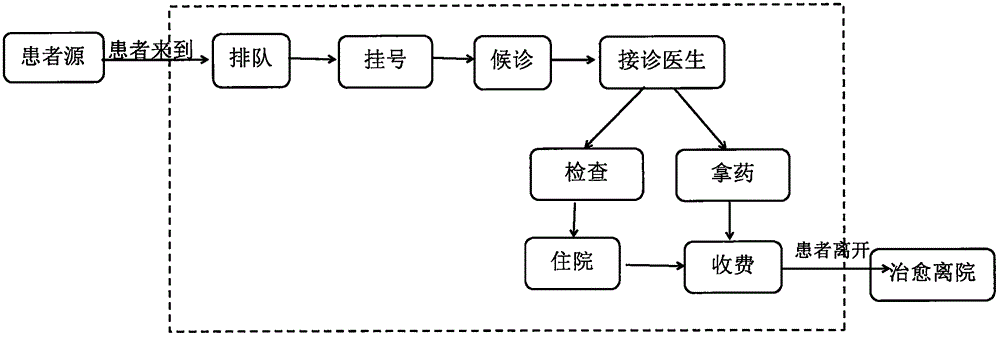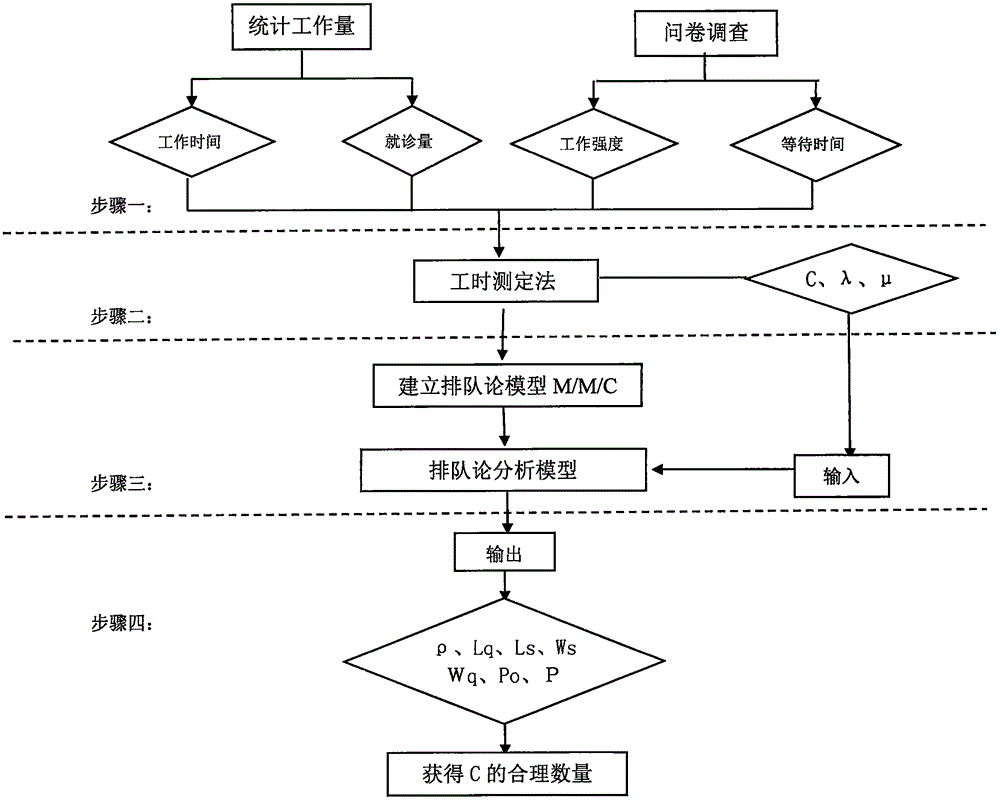Hospital human resource quantitative configuration method based on queuing theory model
A technology of human resources and configuration methods, which is applied in inspection devices, office automation, instruments, etc., can solve problems such as patient delays in seeing a doctor and unreasonable allocation of human resources, so as to reduce waiting time, provide hospital service quality, and satisfy patients and medical staff. The effect of personnel needs
- Summary
- Abstract
- Description
- Claims
- Application Information
AI Technical Summary
Problems solved by technology
Method used
Image
Examples
Embodiment Construction
[0023] The present invention will be further described below in conjunction with accompanying drawing.
[0024] Refer to the attached figure 1 As shown, the hospital is a complex service system. When patients enter the hospital, they enter the hospital queuing system. When the patient arrives at the hospital from the source of the patient, he first enters the queuing registration system to wait for registration. The patient enters the queuing waiting system at the clinic and waits in line according to the queuing rules. System, queuing medicine system, queuing hospitalization system, patients will enter the queuing charging system after receiving treatment, and finally the patient is cured and discharged from the hospital queuing system.
[0025] Refer to the attached figure 2 As shown, the operation steps of the queuing theory model to simulate the quantitative allocation of human resources mainly include 4 parts and 10 measurement indicators.
[0026] Step 1 is the stage...
PUM
 Login to View More
Login to View More Abstract
Description
Claims
Application Information
 Login to View More
Login to View More - R&D
- Intellectual Property
- Life Sciences
- Materials
- Tech Scout
- Unparalleled Data Quality
- Higher Quality Content
- 60% Fewer Hallucinations
Browse by: Latest US Patents, China's latest patents, Technical Efficacy Thesaurus, Application Domain, Technology Topic, Popular Technical Reports.
© 2025 PatSnap. All rights reserved.Legal|Privacy policy|Modern Slavery Act Transparency Statement|Sitemap|About US| Contact US: help@patsnap.com


